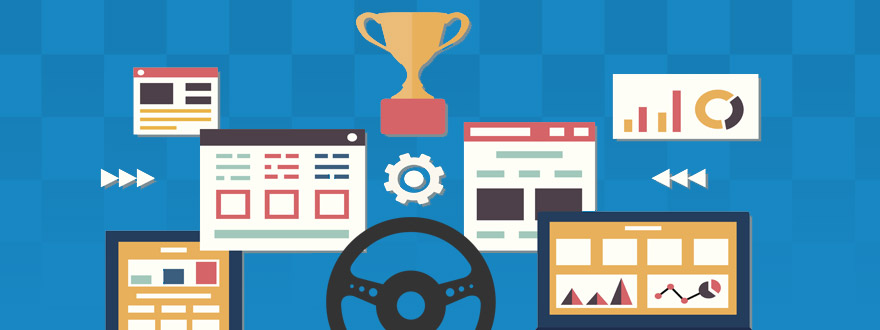Fleet gamification for commercial drivers

Traditionally, fleet managers have taken a reactive approach to managing their drivers’ performance. However, that approach offers drivers little opportunity to course correct much less strive to do their best. And it fails to engage the drivers across the rest of the fleet. Since gamification started becoming popular in 2010, businesses in nearly every industry have implemented programs to engage their workforce. Now, a growing number of commercial carriers use fleet gamification to empower each of their commercial drivers, not just underperformers, to improve.
Prioritize safety. Reduce violations and risk by coaching drivers to drive more safely and prevent accidents. |
Save on fuel. Save on hard fuel costs by motivating drivers to operate vehicles more fuel efficiently. |
Retain quality drivers. Track driver scorecards so you can recognize and reward your top-performing drivers. |
Getting drivers on board
Now the big question: How do you motivate a dispersed, mobile workforce such as commercial drivers to embrace performing to standards you set—without you being there to watch them? Offer your drivers enough reason to repeat the desired behaviors on their own often enough to replace their current habits.
|
|
A little healthy competition
Bragging rights are more effective than Big Brother at proactively engaging commercial drivers. People don’t like being watched and measured—but most love to compete. They want to be recognized among their peers. Driver scorecards, which are populated with telematics data pulled from each vehicle and trip, tally each driver’s performance and automatically ranks them accordingly.
A fleet gamification program in which drivers are scored and ranked:
- fosters healthy competition across your fleet
- motivates drivers to outperform each other
- provides real-world context for performance metrics
- expands the impact of safety training as drivers start self-policing
Coach those who need it, recognize those who reach the goals you set. No room for perceived favoritism, but plenty of room for well-earned bragging rights. Offer incentives to drive fiercer competition across the fleet.
A proactive approach to safety
Traditional fleet management addresses unsafe behavior after the fact—by disciplining drivers who earn speeding tickets or releasing drivers who cause too many accidents. However, fleet gamification engages every driver in your fleet, not just underperformers, to adopt safer habits and reduce the risk of incidents.
Fleet gamification ties into your telematics technology and in-cab coaching solution (if you have one) to track unsafe driving behaviors such as:
- speeding
- lane drifting
- following too closely
- rolling stops
- hard cornering
- hard acceleration
- hard braking
Because driver scorecards and trip video is automatically based on the vehicle’s data after each trip, you have what you need to address (or praise) each driver’s performance.
Driving fuel efficiency
Conversations around fuel economy generally focus on the fleet-wide average. However, drivers are the ones operating the vehicles that consume the fuel, and their habits directly impact how much fuel is used—even for vehicles equipped with efficiency technology such as automated transmissions. Fleet gamification changes the conversation from “what do we do as a fleet?” to “how can each driver perform more efficiently?”
Ensure fleet-wide fairness
Scoring drivers on MPG alone isn’t fair because not all vehicles, loads and routes are the same. Level the playing field by measuring by more than mileage.
| Measure the basics | But also consider |
|
|
Retaining quality drivers
Quality drivers want to work for quality companies. Elevated driver turnover rates make driver retention a hot topic and high priority for any commercial fleet. Fleet gamification can be a key strategy for retaining top performers and attracting new talent.
|
|
Motivated drivers can make your fleet a top contender.
People remember what they do. Fleet gamification is a tool for engaging drivers to adopt specific behaviors and for enforcing policies to improve safety and productivity. An informed, targeted gamified program can be more effective at proactively raising your fleet’s performance levels across the board than trying to convince underperformers to do better instead of leaving because they don’t want to hear it anymore.





